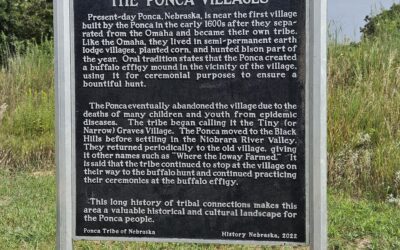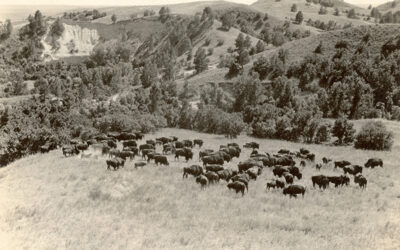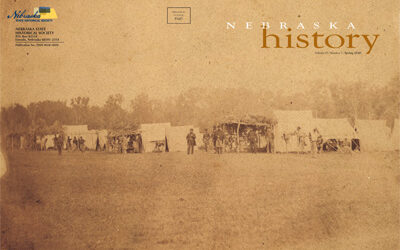Marker Text
Present-day Ponca, Nebraska, is near the first village built by the Ponca in the early 1600s after they separated from the Omaha and became their own tribe. Like the Omaha, they lived in semi-permanent earth lodge villages, planted corn, and hunted bison part of the year. Oral tradition states that the Ponca created a buffalo effigy mound in the vicinity of the village, using it for ceremonial purposes to ensure a bountiful hunt.
The Ponca eventually abandoned the village due to the deaths of many children and youth from epidemic diseases. The tribe began calling it the Tiny (or Narrow) Graves Village. The Ponca moved to the Black Hills before settling in the Niobrara River Valley. They returned periodically to the old village, giving it other names such as “Where the Ioway Farmed.” It is said that the tribe continued to stop at the village on their way to the buffalo hunt and continued practicing their ceremonies at the buffalo effigy.
This long history of tribal connections makes this area a valuable historical and cultural landscape for the Ponca people.
Location
Ponca State Park. View the marker’s location HERE.




